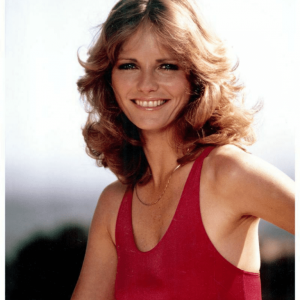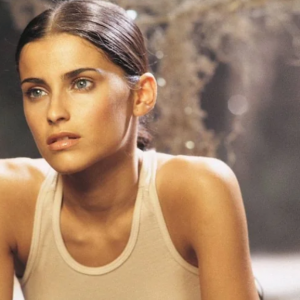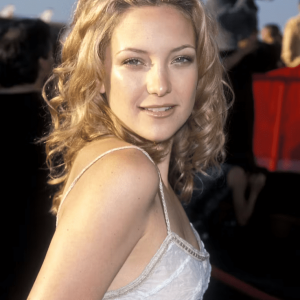Picture a Miami beach in the 1950s: sunlight glinting off waves, a blonde beauty in a handmade bikini posing effortlessly while also directing the camera. That was Bunny Yeager—model, designer, and one of the most influential photographers of her era. Unlike most who either posed for or controlled the camera, Bunny did both. She turned pin-up photography into art, using natural light, authenticity, and fearless creativity to capture images that still feel fresh decades later.

From Small-Town Roots to Florida Fame
Born Linnea Eleanor Yeager in Wilkinsburg, Pennsylvania, in 1929, Bunny grew up far from the glamour of Hollywood. When her family moved to Miami during her teenage years, her world transformed. Surrounded by sunshine and coastlines, she began entering local beauty pageants. With her statuesque figure and magnetic smile, she quickly earned titles like Queen of Miami and the playful Cheesecake Queen of 1951.
But unlike most pageant winners, Bunny wasn’t content to be admired from a distance. She wanted control over her image. With a second-hand camera in hand, she stepped behind the lens—and changed the direction of her life.
Video : Bunny Yeager, 1929-2014
Breaking Barriers with Photography
By 1953, Bunny was formally studying photography, determined to move beyond modeling. What set her apart was her approach. She ditched heavy studio lighting in favor of Florida’s natural sun. She designed and stitched her own swimsuits, ensuring her models looked both glamorous and unique. She captured women outdoors, playful and alive, instead of stiffly posed under artificial lights.
This authenticity gave her photos warmth and vibrancy. Magazine editors noticed immediately. Her style wasn’t about objectifying—it was about celebrating beauty with honesty. Bunny’s camera didn’t just take pictures; it created stories.
The Magic of Bettie Page

Bunny’s career skyrocketed in 1954 when she photographed pin-up legend Bettie Page. Their collaboration produced some of the most iconic images in pop culture. Think of Bettie posing in animal prints with real cheetahs or dressed as a Christmas pin-up in little more than a Santa hat.
These photos launched Bettie into superstardom and made Bunny a sought-after photographer. One of their shoots even landed in Playboy as the January 1955 centerfold, forever linking both women with the golden age of pin-up.
What made the images groundbreaking wasn’t just Bettie’s confidence—it was Bunny’s ability to capture her playfulness without stripping away her humanity. Unlike many male photographers of the time, Bunny created a space where her models felt powerful, not just posed.
Beyond Pin-Ups: Hollywood and Fashion

While pin-ups defined her early career, Bunny’s influence stretched much further. She photographed countless models and actresses, from local talent to global stars. One of her most famous assignments was shooting Ursula Andress in Dr. No. The now-iconic white bikini scene became a defining moment for the James Bond franchise—and Bunny’s photos helped immortalize it.
Video : Pin-up Photographer Bunny Yeager Looks Back
She also turned the camera on herself. Long before selfies were mainstream, Bunny published How I Photograph Myself in 1964, a collection of self-portraits that proved she could master both sides of the lens. Today, these images are celebrated as pioneering works of feminist and artistic photography.
The Woman Behind the Lens

Bunny Yeager’s personal life was just as layered as her professional one. She raised two daughters while balancing the demands of a thriving career. She worked as a Girl Scout leader, explored fashion design, and even appeared in films.
Her career weathered shifts in the industry. When explicit adult photography overshadowed her elegant pin-up style, she refused to compromise her vision. Instead, she reinvented herself, continuing to explore photography on her own terms while building a legacy that would outlast fleeting trends.
Resurgence and Global Recognition

By the 2000s, the art world began celebrating Bunny Yeager’s work with major exhibitions. The Andy Warhol Museum honored her as The Legendary Queen of the Pin-Up. Galleries from New York to Europe displayed her photographs, and critics recognized her as more than a model or pin-up photographer—she was a cultural force who influenced fashion, art, and photography itself.
Her work now belongs in prestigious collections, and her self-portraits are studied as early explorations of female identity and empowerment. Instead of fading into history, Bunny’s reputation grew stronger with time.
Legacy of a Pioneer

Bunny Yeager passed away in 2014 at the age of 85, leaving behind a body of work that continues to inspire. She proved that women could control the lens, not just pose in front of it. Her images—sun-kissed, playful, and unapologetically sensual—still feel revolutionary today.
More than a model, more than a photographer, Bunny Yeager was a pioneer who redefined glamour. She blurred the line between muse and artist, leaving a blueprint for authenticity and creativity that continues to shape photography.
Conclusion: Bunny Yeager’s Timeless Impact

Bunny Yeager wasn’t just a pin-up queen. She was a visionary who took control of her image, championed authenticity, and changed how beauty was captured. From Bettie Page’s iconic photos to Ursula Andress’s Bond bikini, her lens shaped cultural history.
Her story reminds us that trailblazers don’t follow trends—they create legacies. Bunny Yeager’s fearless creativity and timeless artistry ensure that her influence will never fade. She wasn’t just part of the picture—she was the one framing it.


